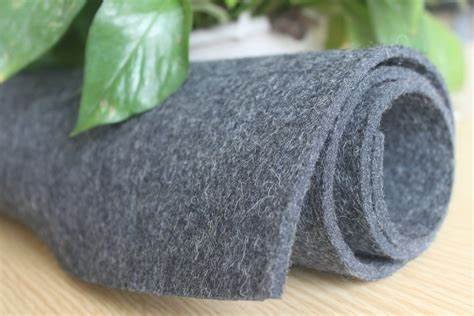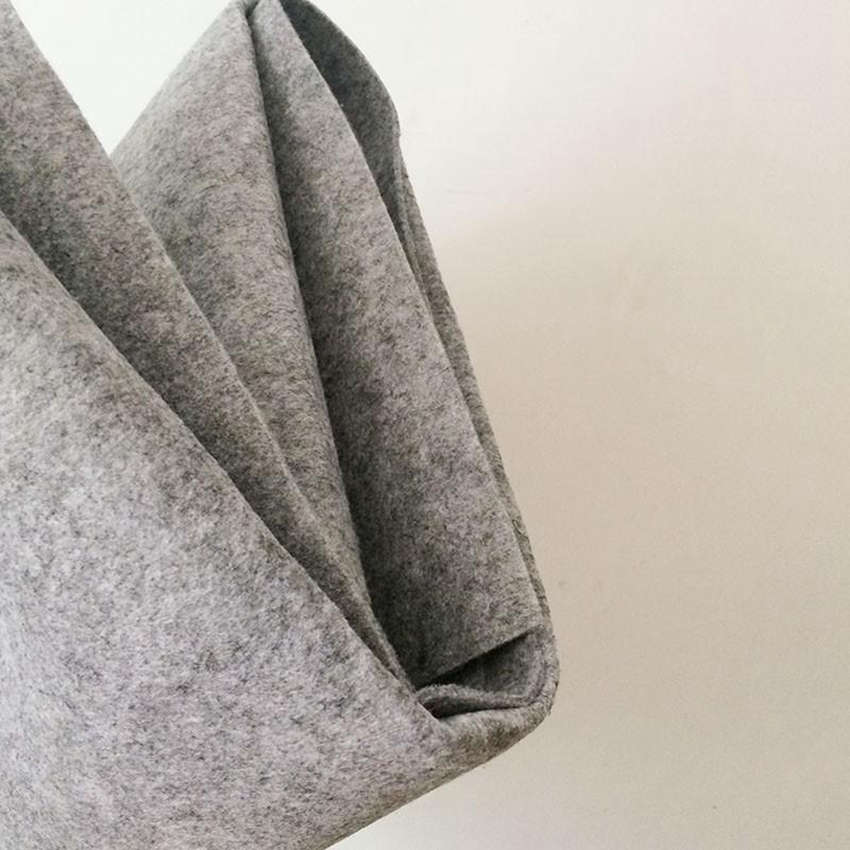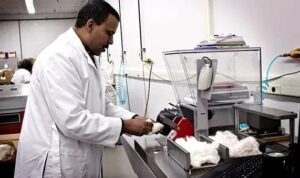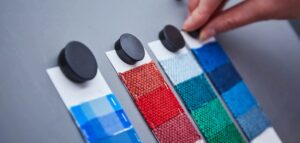What is needle punched nonwoven?
Needle punched nonwoven is a type of nonwoven fabric produced through a mechanical process called needle punching. This process involves the entanglement of fibers by repeatedly inserting and withdrawing barbed needles, which bond the fibers together to form a cohesive fabric. Here’s a detailed look at needle punched nonwoven fabrics:
Production Process of needle punched nonwoven
- Fiber Selection:
- Types of Fibers: Synthetic fibers (like polyester, polypropylene, and acrylic), natural fibers (like cotton, wool, and jute), or blends of fibers can be used.
- Blending: Blending different fibers can enhance specific properties such as strength, absorbency, and thermal resistance.
- Web Formation:
- Carding: Fibers are opened, aligned, and layered into a web using carding machines.
- Air Laying: Fibers are dispersed into an air stream and then deposited onto a moving conveyor belt.
- Wet Laying: Fibers are suspended in a liquid medium and then deposited onto a screen to form a web.
- Needle Punching:
- Needle Loom: The formed web is fed into a needle loom where barbed needles penetrate and withdraw from the web repeatedly.
- Fiber Entanglement: The barbs on the needles catch and entangle the fibers as they move through the web, creating a mechanically bonded fabric.
- Density Control: Adjusting needle penetration depth, density of needles, and the number of passes through the loom allows control over the fabric’s density and strength.
- Finishing:
- Thermal Bonding: Additional bonding can be achieved by passing the fabric through heated rollers.
- Chemical Treatment: Applying binders or coatings to enhance properties like water resistance, flame retardancy, or durability.
- Calendering: Passing the fabric through heated rollers to improve surface texture and appearance.
Characteristics of Needle Punched Nonwovens
- Durability: High tensile strength and durability due to mechanical entanglement.
- Versatility: Suitable for various applications by varying fiber types, web formation methods, and finishing processes.
- Thickness and Loft: Capable of producing thick, lofty fabrics that provide cushioning and insulation.
- Permeability: Adjustable air and liquid permeability.
- Surface Texture: Can range from smooth to highly textured based on needle density and type.
Applications of Needle Punched Nonwovens
- Geotextiles:
- Soil Stabilization: Used in road construction, erosion control, and retaining walls.
- Drainage: Provides filtration and drainage in construction projects.
- Automotive:
- Interior Linings: Car carpets, headliners, and trunk liners.
- Filtration: Engine air filters and cabin air filters.
- Construction:
- Roofing and Insulation: Thermal and acoustic insulation materials.
- Flooring Underlayment: Cushioning and soundproofing under carpets and laminate flooring.
- Furniture and Bedding:
- Mattress Pads and Toppers: Provides cushioning and comfort.
- Upholstery: Adds structure and durability.
- Industrial Applications:
- Filtration: Industrial filtration systems for liquids and air.
- Abrasives: Backing material for abrasive pads and belts.
- Consumer Products:
- Carpets and Rugs: Durable and wear-resistant.
- Wipes and Cleaning Pads: Durable and absorbent for cleaning purposes.
Advantages of Needle Punched Nonwovens
- High Strength and Durability: Suitable for heavy-duty applications.
- Customizable: Properties can be tailored by adjusting fiber types, needle density, and processing conditions.
- Cost-Effective: Economical production process, especially for high-volume applications.
- Recyclability: Many can be made from recycled fibers and are recyclable.
Disadvantages of Needle Punched Nonwovens
- Surface Uniformity: May have less uniform surface compared to other nonwoven fabrics.
- Limited Fine Filtration: Not as effective as meltblown fabrics for capturing very fine particles.
Key Considerations
- Fiber Type and Blend: Determines the final properties of the fabric.
- Needle Specifications: Type, density, and arrangement of needles influence texture and strength.
- End-Use Requirements: Specific applications dictate the choice of fibers, web formation, and finishing processes.
Needle punched nonwovens are versatile and durable fabrics used across various industries due to their strength, customization options, and cost-effectiveness. Their wide range of applications from geotextiles and automotive components to consumer products and industrial uses highlight their importance and adaptability.






